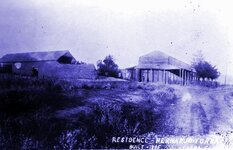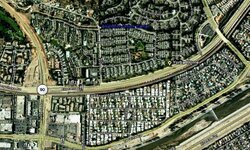Gypsy Heart
Gold Member
I am thinking that if he had enough coins to use them as ornaments....he probally buried a few also..................
Ignoring entirely the Indian's right, acquired by centuries of
possession, the Spanish and Mexican authorities coolly gave to the prominent
among their own people immense tracts of land, including always the choicest,
best watered spots, upon which the Indian villages were located. Within the
comparatively small portion of the county, which lies upon the western slope of
the mountain range, fifteen such large grants were made, the titles to which
were subsequently confirmed by the United States, the aggregate area included
amounting to over 333,546 acres.
Few of the original grantees obtained possession of a larger territory than
did Bernardo Yorba, although of his vast estate only the Rincon grant and the
Sierra (Yorba) rancho, aggregating over 22,000 acres, were located within the
borders of the county. He, however, owned the Rancho Canyon de Santa Ana,
granted to him directly, and also a large interest in that magnificent tract of
62,000 acres known as the Rancho Santiago de Santa Ana, which the Spanish
government had in 1810 given to his father and Juan Pablo Peralta. Thus did Don
Bernardo Yorba's acres extend from the Temescal, in this county, to the ocean
near Newport Beach. His big adobe ranch house was located on the Canyon de Santa
Ana rancho, and views of its ruins, together with the little old chapel and the
family cemetery, can still be seen from the Santa Fe trains. Here he ruled a
tract as large as some European states. His great flocks and herds and vast
fields of grain brought him a most princely income, which enabled him to extend
to all a liberal hospitality. Tradition says that he nailed gold coins as
ornaments around the doorways of his home. In 1849 he purchased the right to
take brea from a thousand acres in the heart of the present Fullerton oil
fields, which he used as fuel. He died in 1858, leaving a family of seventeen
children, and a widow who died only a few years ago.
http://books.google.com/books?id=wm...bqkhgo&sa=X&oi=book_result&ct=result&resnum=3
Ignoring entirely the Indian's right, acquired by centuries of
possession, the Spanish and Mexican authorities coolly gave to the prominent
among their own people immense tracts of land, including always the choicest,
best watered spots, upon which the Indian villages were located. Within the
comparatively small portion of the county, which lies upon the western slope of
the mountain range, fifteen such large grants were made, the titles to which
were subsequently confirmed by the United States, the aggregate area included
amounting to over 333,546 acres.
Few of the original grantees obtained possession of a larger territory than
did Bernardo Yorba, although of his vast estate only the Rincon grant and the
Sierra (Yorba) rancho, aggregating over 22,000 acres, were located within the
borders of the county. He, however, owned the Rancho Canyon de Santa Ana,
granted to him directly, and also a large interest in that magnificent tract of
62,000 acres known as the Rancho Santiago de Santa Ana, which the Spanish
government had in 1810 given to his father and Juan Pablo Peralta. Thus did Don
Bernardo Yorba's acres extend from the Temescal, in this county, to the ocean
near Newport Beach. His big adobe ranch house was located on the Canyon de Santa
Ana rancho, and views of its ruins, together with the little old chapel and the
family cemetery, can still be seen from the Santa Fe trains. Here he ruled a
tract as large as some European states. His great flocks and herds and vast
fields of grain brought him a most princely income, which enabled him to extend
to all a liberal hospitality. Tradition says that he nailed gold coins as
ornaments around the doorways of his home. In 1849 he purchased the right to
take brea from a thousand acres in the heart of the present Fullerton oil
fields, which he used as fuel. He died in 1858, leaving a family of seventeen
children, and a widow who died only a few years ago.
http://books.google.com/books?id=wm...bqkhgo&sa=X&oi=book_result&ct=result&resnum=3








